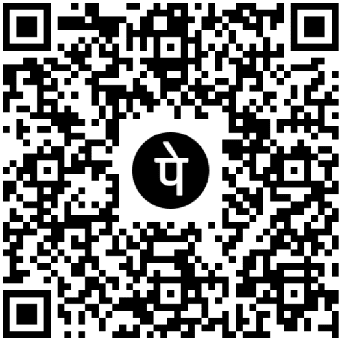ECONOMY OF PAKISTAN: PAST PRESENT AND FUTURE
In this contracting worldwide town web visits, digital TV, syndicated programs and
transmissions through satellite dishes have made insights all the more remarkable
than real factors in affecting general assessment. There is a broadly held insight in
Pakistan – right or wrong - that the famous American perspective on the U.S.S.R. as an fiendish domain and socialism as a danger to monetary and social security of the
world is starting to reverberate itself with Islam supplanting socialism and
Pakistan and other Muslim nations, subbing for the USSR.
The individuals who hold this discernment bring up, for instance, to the new
Committee of Foreign Relations – Asia Society Task Force Report which appropriately entireties
up the well known American view about Pakistan in the accompanying sentence:
"Pakistan presents quite possibly the most intricate and troublesome difficulties confronting US
tact. Its political unsteadiness, dug in Islamist fanaticism, financial and
social shortcomings and perilous aggression towards India have projected dull
shadows over this atomic equipped country".
It is in this setting that the Woodrow Wilson Center merits our
tribute for getting sorted out this Conference to investigate top to bottom one of the
components of this recently arising standard way of thinking about Islam and Pakistan albeit every single one of the parts of the above assertion merits further
investigation and talk to filter out current realities from legends.
I trust that the genuine conversation today will edify large numbers of us, explain a
number of issues and expose a portion of the misconceptions encompassing Islam and
Pakistan's financial course.
I have decided to zero in my comments today on the one part of Pakistan
also, Islam that is, in my view, barely talked about, least known however makes a ton of
nerves in the U.S. This issue has gotten expanded significance since the
appointment of October 2002 when a coalition of strict gatherings won force in the
region of NWFP. I propose to walk you through the past and latest things of
Pakistani economy, sketch the future heading and offer my own appraisal of
how the reception of an Islamic economy, in the event that it to be sure occurs, will influence
Pakistan's future
This paper is isolated into six areas.
The primary segment manages the previous accomplishments and disappointments of
Pakistan's economy. The subsequent area presents a summary of monetary
execution during 1999-2003 – a time of escalated rebuilding and changes
of the economy.
Area III distils the approach exercises gained from the recorded and most
late experience of Pakistan's financial administration. Area IV endeavors to
set out the shapes of things to come bearing of Pakistan's economy dependent on the
exercises took in and advancement experience acquired from in-country and cross country record.
Area V evaluates with respect to how the endeavors to present Islamic monetary
model in the country, if fruitful, will affect upon this future bearing. The
last area gives experiences into the financial possibilities of Pakistan in the
medium term.
Segment I
PAST ACHIEVEMENTS AND FAILURES:
Pakistan was one of only a handful few non-industrial nations that had accomplished an
normal development pace of more than 5% over a multi decade time span finishing 1988-89.
Subsequently, the rate of destitution had declined from 40% to 18
percent before the finish of the 1980s. Table I sets out the primary monetary and
social markers in 1947 and contrast them and 2003. The general picture that
rises out of an impartial assessment of these pointers is that of a country
having made huge monetary accomplishments however a disillusioning record of
social turn of events. The striking highlights of Pakistan's financial history are:
A Country with 30 million individuals in 1947 couldn't take care of itself and needed to
import all its food prerequisites from abroad. In 2002, the ranchers of
Pakistan were not just ready to satisfy the homegrown requirements of wheat, rice,
sugar, milk of 145 million individuals at a lot higher per capita utilization
level, yet in addition sent out wheat and rice to the remainder of the world.
• A normal Pakistani acquires about $500 in 2003 contrasted with not exactly
$100 in 1947. In US current Dollar terms the per capita pay has
extended in excess of five overlap and in consistent terms multiple times.
• Agriculture creation has risen multiple times with cotton achieving a degree of
in excess of 10 million bundles contrasted with 1 million bunches in 1947. Pakistan
has arisen as one of the main world exporter of materials.
• Pakistan scarcely had any assembling ventures in 1947. Fifty years
afterward, the assembling creation file is 12,000 with the foundation of 100 in
1947. Steel, concrete, vehicles, sugar, compost, fabric and vegetable
ghee, modern synthetic substances, refined oil and an assortment of other
ventures make items for the homegrown market as well as in
numerous cases for the world market as well.
• Per capita power age in 2003 was 10,160kwh contrasted with 100
in 1947. Pakistan's huge water system organization of huge stockpiling repositories and
dams, blasts, connect channels developed during the most recent fifty years has empowered the nation to twofold the region under development to 22 million
hectares. Tubewell water system gives very nearly 33% of extra water
to enhance waterway water system.
• The street and parkway network in Pakistan traverses 250,000 km – more than
multiple times the length acquired in 1947. Current motorways and super
expressways and four path public interstates interface the whole nation along
with auxiliary and tertiary streets.
• Natural gas was found in the country during the 1950s and has been
expanded over the long haul. As of now, right around 26 billion cubic meters of regular
gas is created, communicated and conveyed for mechanical, business
also, homegrown utilization.
• Private utilization guidelines have stayed up with the ascent in pay.
There are 30 street vehicles for 1000 people in 2001 comparative with just one
vehicle for a similar number of populace in 1947. Telephone associations
per 1,000 people have ascended to 28.6 from 0.4. Televisions which were nonexistent decorate 26.3 out of each 1,000 houses.
These accomplishments in pay, utilization, horticulture and mechanical
creation are incredibly amazing and have lifted great many individuals out of
neediness levels. In any case, these do pale into unimportance when looked against the
botched freedoms. The biggest difficulty to the nation has been the disregard of human turn of events. Had grown-up education rate been near 100 rather than close
to 50 today, it is my gauge that the per capita pay would have reached at
least $1000 rather than $500.
Pakistan's made fares during the 1960s were higher than those of
Malaysia, Thailand, Philippines and Indonesia. Had interest in teaching the
populace and redesigning the preparation, abilities and soundness of the workforce been
up to the degree of East Asian Countries and an approach of receptiveness to world market
would have been kept up with no break, Pakistan's fares would have
been at any rate $100 billion rather than insignificant $12 billion. Had the populace development
rate been diminished from 3% to 2 percent, the issues of clog and
deficiencies in the degree of foundation and social administrations would have been
stayed away from, the poor would have acquired better admittance to training and wellbeing
furthermore, the rate of destitution would have been a lot of lower than what it is today.
In any case, as though this disregard of human improvement was sufficiently not, the country
loosened during the 1990s and started to sneak through development, fares, incomes, and
advancement spending and got entangled into profound swamp of outside and
homegrown obligation. Therefore the occurrence of neediness rose from 18
percent in 1988-89 to 33 percent before the finish of the 1990s. This was expected to both
basic underlying and institutional issues just as to helpless administration
furthermore, incessant changes in political systems. With short life expectancies, succeeding
governments were reluctant, if not by and large reluctant, to change the lease chasing
exercises of the decision tip top comprising of a little class of government officials, civil servants finance managers, primitive landowners and other personal stakes and halted from
taking intense disliked financial choices to fix the economy.
Naturally, they were more engrossed with the goals of holding
political force and settling on such choices might have additionally presented them to
the danger of expulsion from office. Additionally, the normal life expectancy of a few
a long time was obviously lacking for significant arrangement or institutional change. The
outside climate was additionally ominous as the failure of progressive
governments to meet their responsibilities with worldwide monetary organizations
prompted a genuine believability hole among the givers and irregular withdrawal of
help. The occasion of May 1998, when Pakistan led its first atomic
test, and its result prompted further financial detachment of Pakistan and a
extensive disintegration of certainty by homegrown and non-inhabitant Pakistanis.
Monetary approvals were forced against Pakistan by the western
governments. By the last part of the 1990s Pakistan had entered right around a basic condition of
loss of motion and stagnation in its economy especially in its outer area. The
freezing of unfamiliar cash accounts had brought about a huge drop in
laborers' settlements, send out development was negative, IMF program and World
Bank help were suspended, reciprocal givers had ended their guide while
obligation installments due were in far abundance of the fluid unfamiliar trade assets
the nation had. Pakistan was nearly near the precarious edge of default on its
outer installments.











0 Comments